Where is Kenya?
About Kenya
The Land
The People
Life and Death
Health, Energy and the Environment
Education and Work
Travel, Communication and the Media






Back to the Flags of Africa page




Kenya is a large country in eastern Africa.
Kenya borders the Indian Ocean.
The land is low plains rising to central highlands bisected by the Great Rift Valley.
The geographical coordinates for the centre of Kenya, also known as lines of latitude and longitude, are:-
Latitude - 1 00N
Longitude - 38 00E
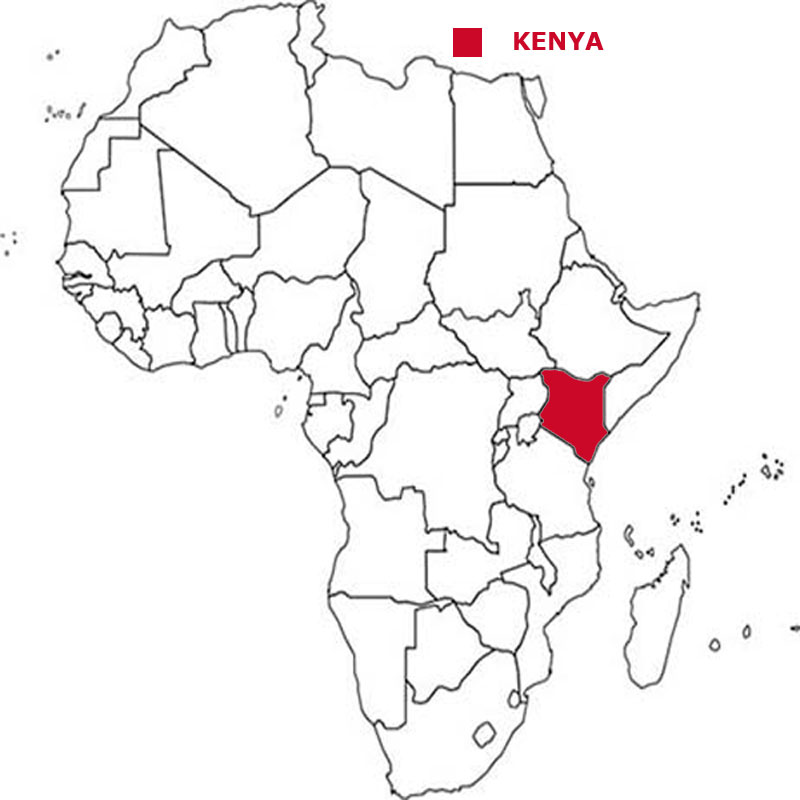

Check the weather in Nairobi now.
This is the time in Nairobi now
 The Kenyan flag is three equal horizontal stripes of black, at thetop, red and green. The red band is edged in white. A large Maasai warrior's shield covering
crossed spears is superimposed at the centre. Black represents the majority population, red the blood shed in the struggle for freedom, green stands for natural
wealth and white for peace. The shield and crossed spears represent the defense of freedom.
The Kenyan flag is three equal horizontal stripes of black, at thetop, red and green. The red band is edged in white. A large Maasai warrior's shield covering
crossed spears is superimposed at the centre. Black represents the majority population, red the blood shed in the struggle for freedom, green stands for natural
wealth and white for peace. The shield and crossed spears represent the defense of freedom.
Kenya is a presidential republic with a president as head of state and head of the government.
In elections everyone over the age of 18 can vote.
The currency in Kenya is the Kenya shilling. Kenya is a member of the Commonwealth.
English and Kiswahili are the official languages.
Hear the National Anthem
These are the anthem words
We have already written our own history of England but are asking schools in Kenya to provide us with a detailed history of
their own country. Check how here.
![]()
![]() Back to the top
Back to the top

The total land area of Kenya is 569,140 sq kms which is the 22nd largest in Africa.
Kenya has lakes, rivers and canals which total 11,227 sq kms.
Kenya has boundaries with 5 countries
- Eithiopia 867 kms
- Uganda 814 kms
- Tanzania 775 kms
- Somalia 684 kms
- South Sudan 317 kms
Kenya has a coastline of 536 kms which is the 22nd longest in Africa.
The highest point in Kenya is Mount Kenya at 5,199 metres.
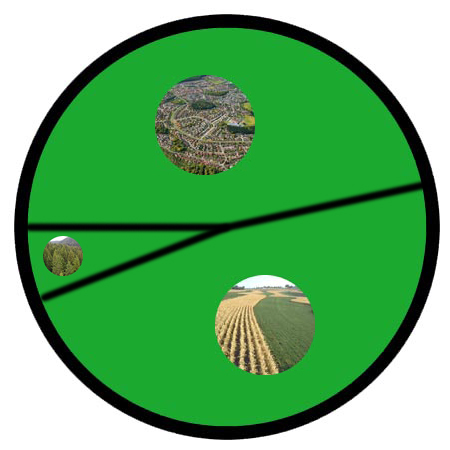

The total population of Kenya is 48.40 million people, making it the 7th largest country in Africa by population.
Of this number 24.26 million are females and 24.14 million are males.
A person from Kenya is called a Kenyan.
To be a citizen of Kenya, one of your parents must be a citizen of Kenya. It is not sufficient to be born in Kenya. You have to live in Kenya for
7 years before you can begin to apply for citizenship.
The largest five cities in Kenya, by population are:-
- Nairobi 2,750,547 people
- Mombasa 799,668
- Nakuru 259,903
- Eldoret 218,446
- Kisumu 216,479
 Each little Owlbut is 1 person and
the big yellow rectangle is 1 sq km. After a while you can compare countries and see which ones are the most crowded. Remember it is only an average as
more people live closer together in towns and cities than in villages out in the country.
Each little Owlbut is 1 person and
the big yellow rectangle is 1 sq km. After a while you can compare countries and see which ones are the most crowded. Remember it is only an average as
more people live closer together in towns and cities than in villages out in the country.
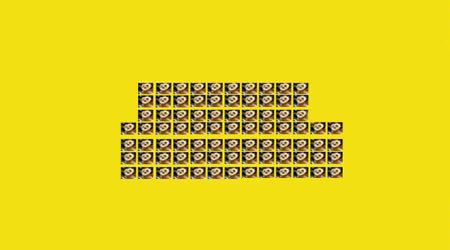
27.0% of the people live in cities or towns.

The birth rate in Kenya is 22.6 births per 1,000 of population
The death rate in Kenya is 6.7 deaths per 1,000 people.
Check this against the birth rate. If the death rate is higher than the birth rate then
the population will decrease unless immigrants arrive in the country.
There are 31.7 deaths of girls under 1 year per 1,000 of births and 40.3 deaths of boys.
The median age for females is 20.2 and for males is 19.9. The median age is that age which divides the population exactly in half so there are the same number
of people above the median age as below it.
The average age of a woman when she has her first child is 20.3.
The elderly dependency ratio is 4.6. This is the number of elderly people (ages 65+) per 100 people of working age (ages 15-64).
The potential support ratio is 21.7. This is the number of working-age people (ages 15-64) per one elderly person (ages 65+). As a population ages, the potential support ratio tends to fall, meaning there are fewer potential workers to support the elderly.
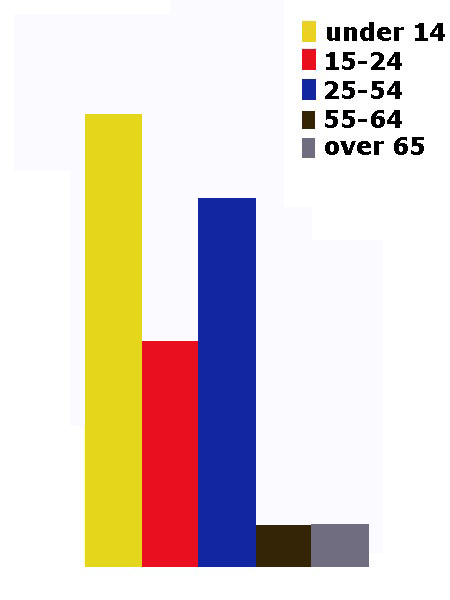
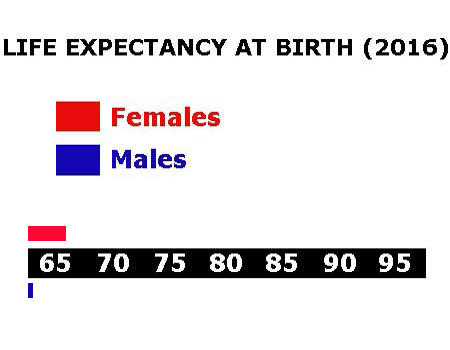

Kenya spends 5.7% of its total income on health care.
There are 0.20 doctors per 1,000 people.
There are 1.4 hospital beds per 1,000 people.
7.1% of the population are estimated as obese.
81.6% of the urban population and 56.8% of the rural population have drinking water that is either piped into their home or they have access to a public tap, a protected borehole, well, spring or
protected rainwater collection facility.
31.2% of the urban population and 29.7% of the rural population have access to a flushing toilet that is connected to a sewer, a pit latrine (that is a
permanent hole in the ground that is looked after) or a composting toilet.
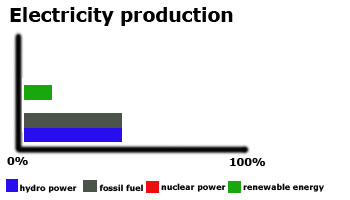
Kenya releases 13.0 million metric tons of carbon dioxide by burning fossil fuels in the process of producing and consuming energy. This puts it as the 10th highest in Africa.

Kenya spends 5.2% of its total income on education.
Children usually start school at age 6 in Kenya. Primary education is for eight years until age 14 and secondary education can continue till 18/19. This may be followed
by further education at a university or college.
Generally the school year consists of 3 terms and starts in the first week of January and finishes at the end of October. There is usually a 3 week
break in April and another 3 week break in August.
74.9% of females and 81.1% of males are able to read and write by the age of 15.
We have no figures for the number of people aged between 16 and 24 who are not in work.
The total number of people available for work in Kenya is 19.6 million.
 They work in the following sectors.
They work in the following sectors.
- Agriculture includes farming, fishing and forestry work
- Industry includes mining, manufacturing, construction and energy workers
- Services is everything else

There are 16 paved airports in Kenya, which is the 14th highest number in Africa.
![]()
There are 2,778 kilometres of railways in Kenya, the 9th longest in Africa.
![]()
There are 161,415 kilometres of roads in Kenya, which means Kenya is in 3rd place for the most kilometres of roads in Africa.
![]()
There are 3 major national newspapers in Kenya.
There are 42.81 million mobile phone users.
Less than 1% of the people have a fixed landline.

12.17 million people have access to the internet at home via any device (computer or mobile).


